Early days
When I was training as a Registrar in the Obstetrics and Gynaecology Unit at Hospital Sultanah Aminah, Johor Bahru, between 1988 and 1991 the only laparoscopy we did was diagnostic laparoscopy and laparoscopic tubal ligation using the Falope ring.
UK
I went on to work in a small hospital in the UK. Very few surgeries were done by laparoscopy in that hospital. One of my consultants was starting to do some hysteroscopic surgeries at that time.
Specialist in OBGYN
On returning from the UK, I became a specialist at the same hospital. This was the time went the hospital acquired a video laparoscopy system. The general surgeons were doing laparoscopic cholecystectomy and I frequently watched them struggling with this surgery. I was trying out simple surgeries by laparoscopy which includes laparoscopic salpingectomy for ectopic pregnancies and simple laparoscopic cystectomies. We had several consultants from the National University Hospital, Singapore who used to come and do laparoscopy cases with us. I learned from them.
Training in Taiwan
I was frustrated, as my skills in laparoscopic surgery were not improving. I decided to take the offer of Mahkota Medical Centre to go to Taiwan to train in laparoscopic surgery. I was at Chang Gung Memorial hospital, Taiwan for 2 months. I was the first assistant to Prof Soong Kwai Yong and Dr. Lee Chyi Long during the duration of my training. Chang Gung Memoral hospital was already well known for advanced in laparoscopic surgery. They were doing different procedures including LAVH (laparoscopic assisted vaginal hysterectomy), laparoscopic cystectomy and laser treatment for endometriosis. Laparoscopic suturing skills were still rudimentary. I used to assist in 5 cases a day for 5 days in a week. Before returning home, they allowed me to do a few cases of LAVH on my own.
Batu Pahat District Hospital
On returning, I was posted to Batu Pahat district hospital. I was the “boss” in that small hospital. This gave me the opportunity to do what I want to do. I just wnted to perform laparoscopic surgeries. I contacted all the laparoscopic instruments companies such as Storz, Olympus, Richard Wolf and Stryker and ask them to loan me their system for 1 month in rotation. Although I was in this hospital for only 6 months, I performed many laparoscopic surgeries. I clearly remember performing a total of 30 LAVHs while I was there.
Mahkota Medical Centre
In October 1994, I moved to Mahkota Medical Centre, Melaka, Malaysia. It was a brand new private hospital. I had the skills to perform laparoscopy but I did not have the cases to operate. Without operating regularly, I was worried that I will loose these skills. I wrote to the Terendak Army Hospital and Melaka General Hospital offering them my skills for free. Terendak Hospital rejected my offer stating that I need to be drafted in the army before I can go there to operate. Luckily, the consultant OBGYN at Melaka hospital was a friend and allowed me to go there to operate with him. We learnt from each other.
I keep all my data. I have a record of all the cases I have performed in Mahkota Medical Centre since 1994. I did my first laparoscopy, a diagnostic laparoscopy and dye test on the 14/10/1994. My first laparoscopic cystectomy for an ovarian cyst was done on the 7/11/1994 and my first LAVH was performed on the 14/11/1994.
My progress in performing lap surgery was slow. From October to December 1994, I performed 16 cases by laparoscopy. The numbers gradually increased. I had many challenges performing laparoscopic surgeries at that time. Firstly my senior colleagues who do not perform laparoscopic surgeries were watching me carefully. It was not possible for me to make any mistakes at all as I will be crucified. One senior consultant told me that I am endangering my patients by performing laparoscopic surgery because “I could injected carbon dioxide into the veins of the patient”. My other challenges were that I need to train nurses to assist me and I also had to persuade the hospital to get good instruments for me.
IVF Centre and International Congresses
In order to increase the number of patients for laparoscopy, I persuaded the hospital to start an IVF (invitrofertilization) centre. We started the IVF service in 1997. I was so involved in making the IVF services successful that I neglected improving my skills in laparoscopic surgery until a colleague of mine called me in 2003 and asked me whether I would like to be the organising chairman of the International Society of Gynaecological Endoscopy(ISGE) Annual Congress to be held in 2004, in Kuala Lumpur. It was in the middle of the SARS epidermic. I was supposed to travel to Cancun, Mexico for the 2003 annual meeting of the ISGE. I got too worried about SARS and I chickened out. However, I accepted the offer to be the organising chairman of the ISGE Annual Congress. That was a changing moment for me as far as laparoscopy was concerned. I had the opportunity to interact with the world’s best laparoscopic surgeons such as Dr. Harry Reich and Dr. Tamer Seckin. We had a live surgery workshop at Selayang Hospital and I was a first assistant to many of these experts. I learnt a lot from them.
Learning Under Experts
From then onwards I made it a point to learn laparoscopic surgery from as many experts as possible. I was the organising chairman for the pre-congress workshop for FIGO 2016 and again had the opportunity to assist live surgery demonstration performed by Bruno Van Herendael and Steffano Betocchi. In 2006 I came across a Japanese surgeon who was known for performing laparoscopic Wertheims. Hysterectomy. I persuaded my friend Dr. Vijay who was the head of department of Obstetrics and Gynaecology at Kuching Hospital, Sarawak, to host a workshop on laparoscopic radical hysterectomy. Dr. Ando and Dr. Kanao came down and demonstrated 4 cases consisting of laparoscopic Wertheims and laparoscopic retroperitoneal paraaortic lymphadenectomy. My jaws dropped observing his skills.
Laparoscopic Radical Hysterectomy
Dr. Vijay and I started performing laparoscopic radical hysterectomies. I travelled to Kucing to perform the first few laparoscopic radical hysterectomies. Later when Vijay was transferred to Melaka, we were performing the surgery at at Melaka Hospital. Dr. Vijay will come and perform the surgery with me at Mahkota Medical Centre whenever I have a case for laparoscopic radical hysterectomy. Being able to perform Laparoscopic radical hysterectomy brought me to another level in laparoscopy because one becomes comfortable in dissecting in lateral spaces of the pelvis.
Workshops Organised
Dr. Vijay and I continued to organise laparoscopic surgeries workshops. We invited the late Dr. Rakesh Sinha to demonstrate laparoscopic surgery on large uteruses. We also invited Prof Nam Hyun Joo of Korea to demonstrate laparoscopic radical hysterectomies. Later I invited Prof Anauld Watteiz of France to demonstrate laparoscopic surgery for endometriosis at Mahkota Medical Centre. Dr. TJ Kim of Korea also came to demonstrate single incision laparoscopic surgery. I also organised many animal workshops at Mahkota Medical Centre. By organising these workshops I made many friends and learnt a lot from all of them.
3D Laparoscopy
In 2014, I decided to invest in 3D laparoscopy. The late Dr. Rakesh Sinha convinced me that 3D laparoscopy is the future. My hospital was not willing to invest in the equipment, so I bought the system myself. I have not regretted getting the 3D system. Although now I feel handicapped, being not comfortable to perform 2 D laparoscopic surgeries anymore, 3D laparoscopy not only made performing laparoscopic surgery a pleasure, it was also very safe for the patients.
Fellowship in laparoscopic Surgery and Infertility
Many Malaysian gynaecologists have come to observe and assist me in laparoscopic surgeries. Since there are no training programmes for laparoscopic surgery in Malaysia for gynaecologist especially in private practice, I decided to formalize this training by starting a Fellowship in Laparoscopic Surgery and Infertility. This is a programme whereby Malaysian gynaecologist can come and work with me for a duration ranging from 3 months to 1 year. Currently I am training my 9th Fellow.
12 steps to improve your skills in Laparoscopic surgery
I would like to outline what are the steps I took to improve my skills in laparoscopic surgery over the last 25 years.
- Work under a mentor
This should be the first step for every budding laparoscopist. Just like learning conventional surgery, learning under a mentor will be the best way of acquiring all the basic in performing laparoscopic surgery. - Get a good laparoscopic training box.
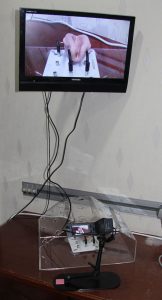 A training box helps a beginner in hand eye coordination. Laparoscopic suturing is another skill that can be learnt with a training box. Every budding laparoscopist should own his own box. Practice laparoscopic suturing everyday. When I first me Dr. Masaaki Ando of Japan, a world renowned laparoscopic surgeon, he told me that he practices suturing everyday. When practicing laparoscopic suturing, you need to stand correctly. There is no point standing directly in front of the monitor. You need to stand at the side of the box. You should practice as though you are operating on a patient. You need to simulate different scenarios in suturing. In order to perfect the art of laparoscopic suturing, I also invested in many training models so that I can practice different ways of suturing and even suturing with both hands.
A training box helps a beginner in hand eye coordination. Laparoscopic suturing is another skill that can be learnt with a training box. Every budding laparoscopist should own his own box. Practice laparoscopic suturing everyday. When I first me Dr. Masaaki Ando of Japan, a world renowned laparoscopic surgeon, he told me that he practices suturing everyday. When practicing laparoscopic suturing, you need to stand correctly. There is no point standing directly in front of the monitor. You need to stand at the side of the box. You should practice as though you are operating on a patient. You need to simulate different scenarios in suturing. In order to perfect the art of laparoscopic suturing, I also invested in many training models so that I can practice different ways of suturing and even suturing with both hands. - Prioritise laparoscopic surgery
Performing laparoscopic surgery should be your priority. You can’t be good at anything if you don’t spend time acquiring the skills. I was already in private practice when I started laparoscopic surgery. In private practice, laparoscopic surgery is more expensive than traditional surgery. I decided that I will perform laparoscopic surgery at whatever cost the patient is willing to pay. I will waive my fees if it is necessary to get it done laparoscopically. In the early years my surgeons fees for a LAVH was only RM 800. When the cost is low I was able to encourage more patients to choose to under go their surgery laparoscopically. - Travel and learn from other surgeons
I have travelled to learn from many great laparoscopic surgerons. I spend 10 days with Dr. Ando in Kurashiki Medical Centre in Japan. Although it was only observation, I learnt a lot from him. I also spend 1 week with Dr. Shailesh Puntambaker to learn his technique of radical hysterectomy called the Pune technique. All these trips were done at my own expense. I have also travelled for several workshops in Strasbourg, France to learn from Prof Anauld Wattiez. - Take notes and implement them immediately
Take a lot of notes when you travel to observe laparoscopic surgeons at work. Come back and implement all those you learn within 2 weeks. If you wait longer, you will forget everything. This step is essential. - Be the first assistant
The best way to learn is to be the first assistant. It is difficult to be the first assistant when you visit another centre or attend a workshop. Invite experts to your hospital and be their first assistant. I have learnt most when I organise a workshop and I am the first assistant. I have assisted numerous surgeons including Dr. Harry Reich, Dr. Bruno Van Herenderal, Prof. Anauld Wattiez, Dr. Rakesh Sinha, Dr. Masaaki Ando, Prof Nam Hyun Joo, Yong, Dr. TJ Kim, Prof. Lee Chyi Long and Prof Song Kwei Yong. The person who learnt the most during a live surgery workshop is the first assistant. - Keep a diary
Write down everything you do everyday. I keep an electronic diary where I write down what I learnt everyday. When I perform laparoscopic surgery, I will write down what I learnt from that surgery. In this way I am constantly trying to improve my skills and techniques. - Keep a record of everything that you do.
I have records of all the cases I have done at Mahkota Medical centre for the last 25 years. I record all my surgeries and keep them filed in a DVD/blue ray. I frequently go back and see how I performed a surgery. I can learn a lot from looking back and reviewing my surgeries. If I have to do a surgery that I don’t do frequently such as laparoscopic sacrocolpopexy, I will review my earlier surgeries and read about all the mistakes I have made on that type of surgery, so that I can do a better job this time round. I have my own computer server where I keep all these information. In this way everything is at my finger tips. - Teach
Teaching is the best way of learning. I started teaching laparoscopy when I organised workshops. I held a workshop every year from 2011 till 2017. There workshops are usually live surgery demonstration by an invited expert or myself sometimes with live animal dissection. I stopped organising this workshops several years ago because I became tired of looking for sponsors. I became a part of an organisation called APGET (Asia Pacific Gynaecological Endoscopy Training group). We get funding to organised 3-4 workshops every year. The workshops are held in Bangkok, Guang Zhou and Korea. These are well-organised workshops. At these workshops we teach laparoscopic surgery in a dry lab, on live animals and cadaver. At these workshops, I learn more than I teach. Teaching laparoscopy made me better surgeon. Having Fellows also keep me on my toes so that I teach and perform good laparoscopic surgeries. Only by teaching, I am was able to simplify steps in performing laparoscopic surgery. - Don’t be afraid to place a laparoscope
Even if you think a case is very difficult to do, place a laparoscope in the abdomen to see. In some cases, you will be surprised that it is not that difficult after all. - Work in pairs
If you have another keen laparoscopist, work together. You can assist and learn from each other. I did have this benefit when performing laparoscopic radical hysterectomy with Dr. Vijay. He is a good gynae-oncology surgeon and I am a laparoscopist. Together we could get a lot of difficult cases done. - Don’t stop learning
My good friend the late Dr. Rakesh Sinha wrote a book called “ the anatomy of Success” He categorise people to “ learners” and “non-learners”. If you think you know everything, you are definitely going to fail. One of the advantages of minimally invasive surgery is that it is visual. We can see everything that the surgeon does. Many experts place their laparoscopic surgery videos on the internet. Watch them. Some good channels are Horace Roman, IRCAD and Malzonichannel. I have a channel where I frequently post teaching videos. Watch them and learn from them. Use the lessons learned in your surgery. - Practice with your left hand
In laparoscopic surgery your left hand (non dorminant hand) is as important as your right dominant hand. You should practice with your left hand. Make sure that you can grip well with both your hands because many a times you need to hold tough tissues like fibroids. Practice suturing with your left hand. I try to use my left hand for daily activites like brushing my teeth to get some dexterity into the movements of my left hand. I also learned to juggle so that my hand eye coordination of both hands are good. - Give up obstetrics
This is easily said than done. I still do obstetrics. The most stressful situation is to do laparoscopic surgery when you have a lady in labour.
Laparoscopic surgery is difficult and it requires commitment. It is the surgery of the future. It doesn’t mean that if you can perform a procedure by laparotomy, you can perform the same surgery by laparoscopy. You need to be trained.
Selva
Sevellaraja Supermaniam
26/3/2020

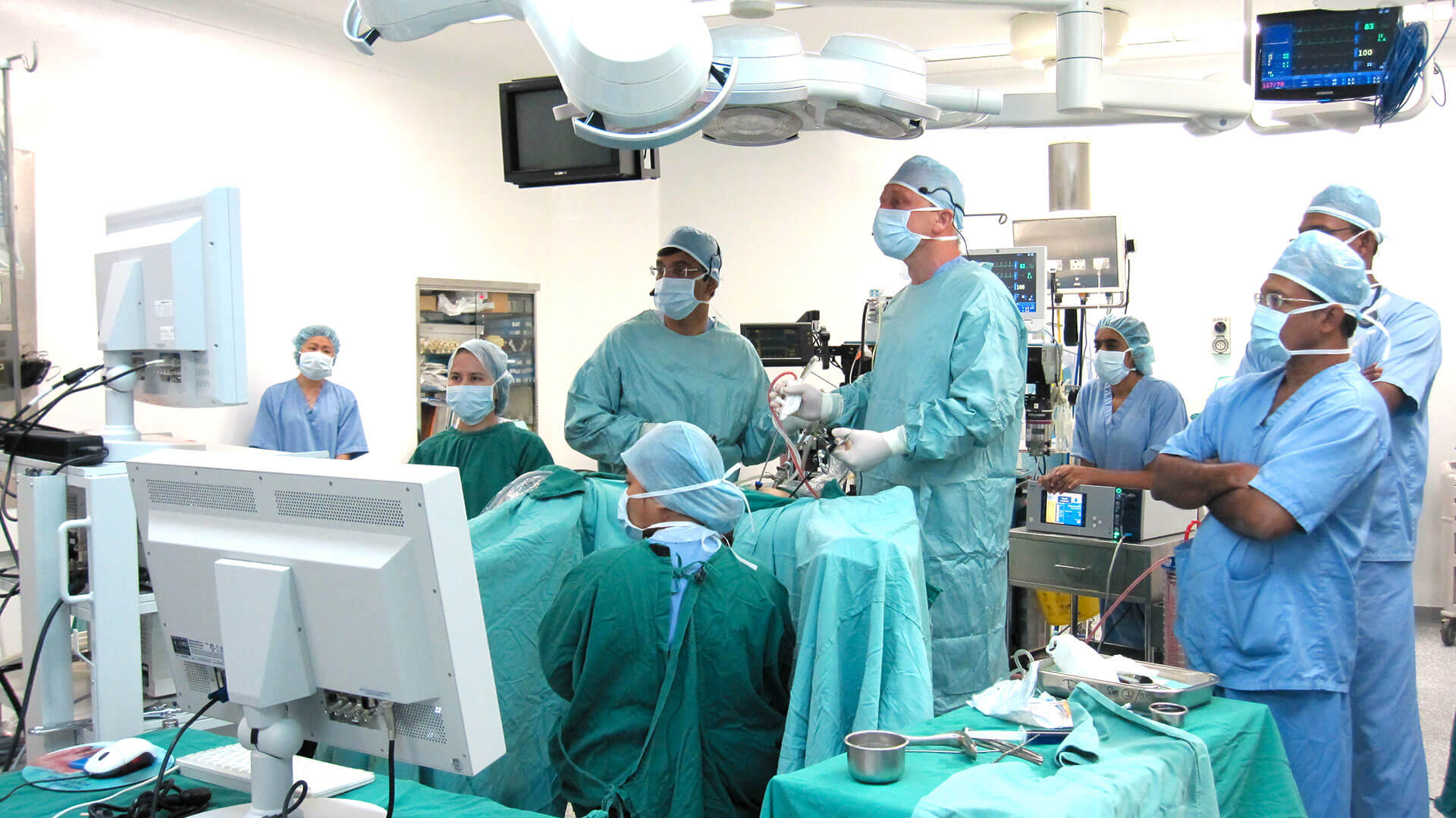
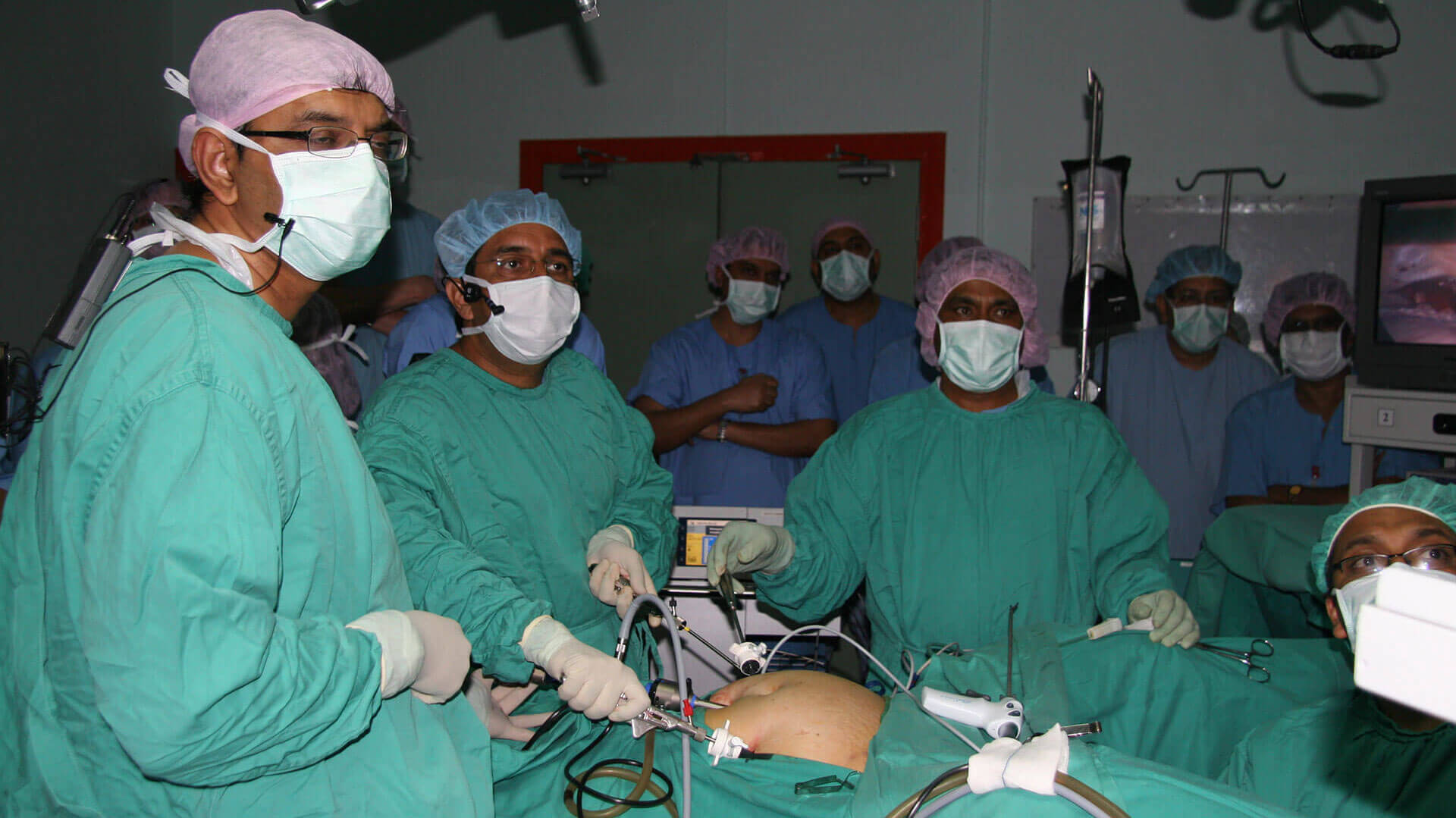
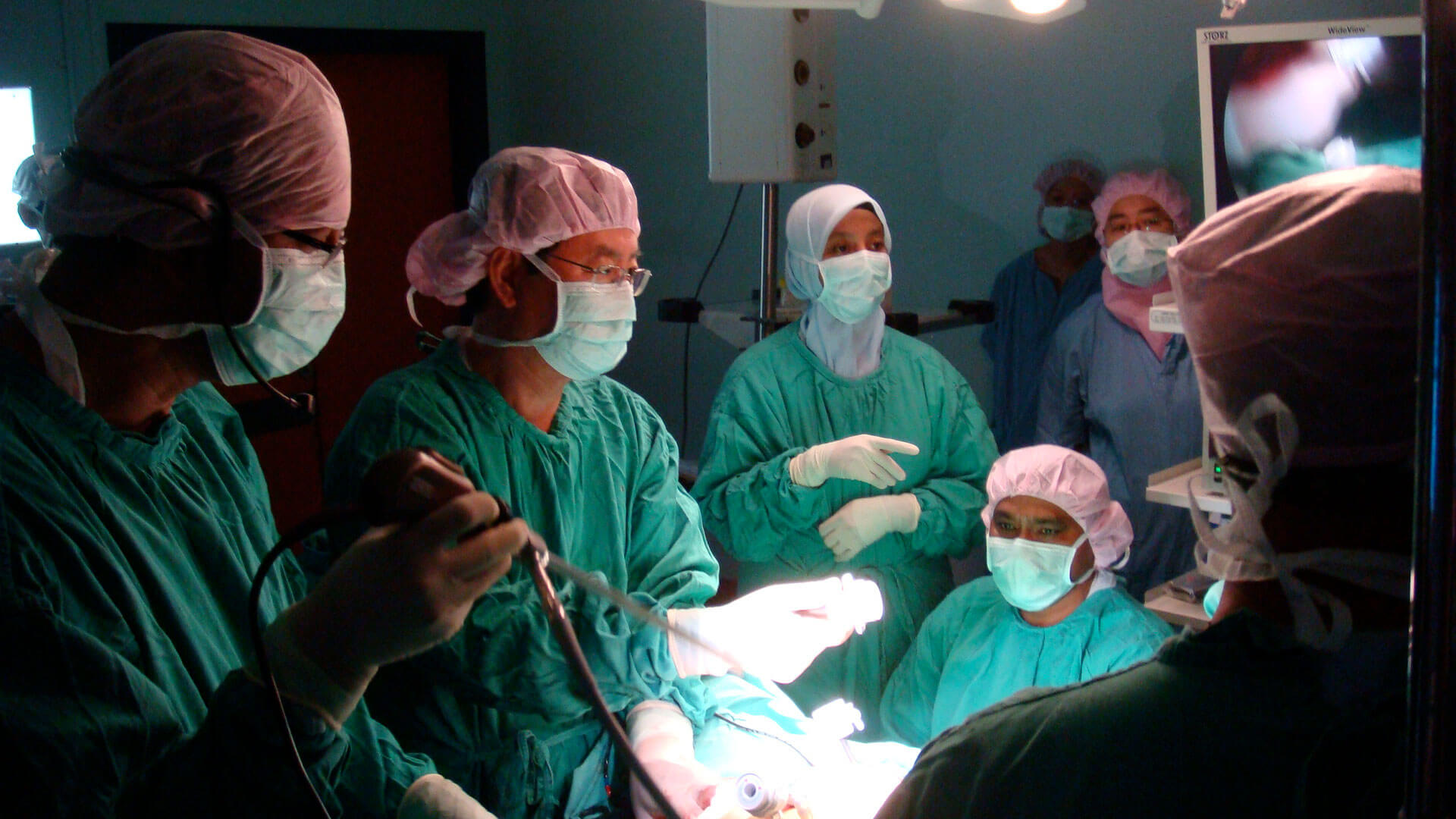
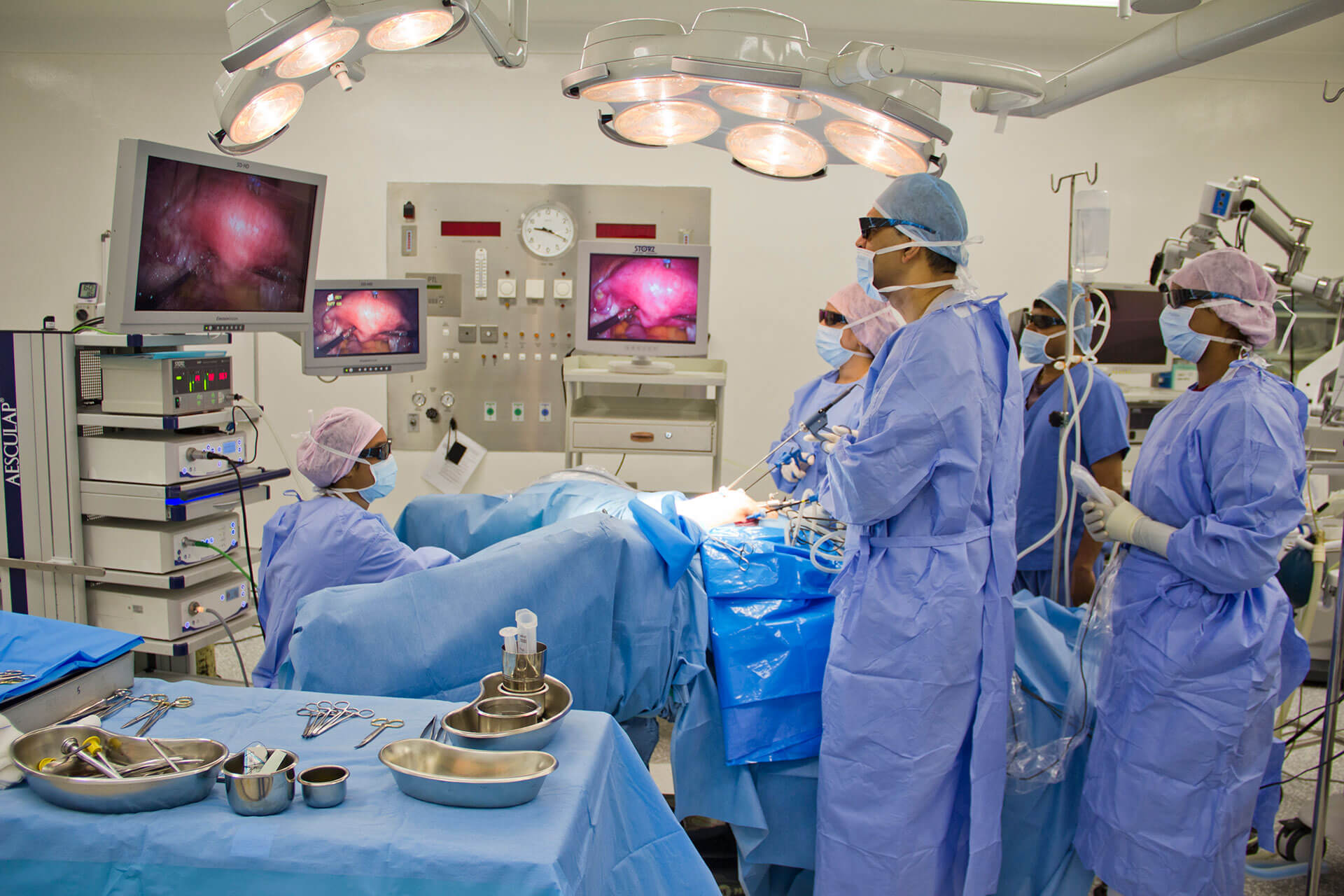
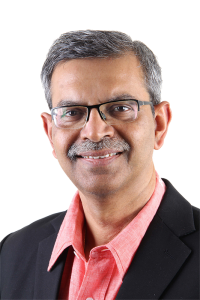





1 thought on “Laparoscopy- 14 steps to improve your skills in Laparoscopic surgery”
Im a obgyn at Gleneagles ampang
I have been doing laproscopic work and the most i do is TLH
Am keen to learn and better my skiils, wonder if i could gain some practice under u .